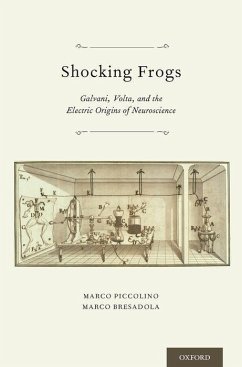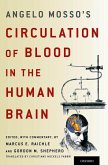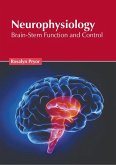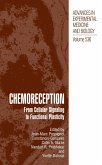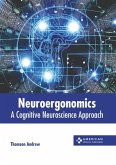Marco Piccolino, Marco Bresadola
Shocking Frogs
Galvani, Volta, and the Electric Origins of Neuroscience
Marco Piccolino, Marco Bresadola
Shocking Frogs
Galvani, Volta, and the Electric Origins of Neuroscience
- Gebundenes Buch
- Merkliste
- Auf die Merkliste
- Bewerten Bewerten
- Teilen
- Produkt teilen
- Produkterinnerung
- Produkterinnerung
Shocking frogs offers a completely new perspective on a fundamental episode of eighteenth-century science--leading, on one hand, to the discovery of the electric nature of nervous signals, and, on the other, to the invention of the electric battery.
Andere Kunden interessierten sich auch für
![Angelo Mosso's Circulation of Blood in the Human Brain Angelo Mosso's Circulation of Blood in the Human Brain]() Marcus E RaichleAngelo Mosso's Circulation of Blood in the Human Brain107,99 €
Marcus E RaichleAngelo Mosso's Circulation of Blood in the Human Brain107,99 €![Neurophysiology: Brain-Stem Function and Control Neurophysiology: Brain-Stem Function and Control]() Neurophysiology: Brain-Stem Function and Control153,99 €
Neurophysiology: Brain-Stem Function and Control153,99 €![Oxidative Neural Injury Oxidative Neural Injury]() Oxidative Neural Injury85,99 €
Oxidative Neural Injury85,99 €![Metabolism and Functions of Bioactive Ether Lipids in the Brain Metabolism and Functions of Bioactive Ether Lipids in the Brain]() Akhlaq A FarooquiMetabolism and Functions of Bioactive Ether Lipids in the Brain116,99 €
Akhlaq A FarooquiMetabolism and Functions of Bioactive Ether Lipids in the Brain116,99 €![Chemoreception Chemoreception]() PequignotChemoreception359,99 €
PequignotChemoreception359,99 €![Neuroergonomics: A Cognitive Neuroscience Approach Neuroergonomics: A Cognitive Neuroscience Approach]() Neuroergonomics: A Cognitive Neuroscience Approach153,99 €
Neuroergonomics: A Cognitive Neuroscience Approach153,99 €![Oxidative Neural Injury Oxidative Neural Injury]() Sigrid C. Veasey (ed.)Oxidative Neural Injury187,99 €
Sigrid C. Veasey (ed.)Oxidative Neural Injury187,99 €-
-
-
Shocking frogs offers a completely new perspective on a fundamental episode of eighteenth-century science--leading, on one hand, to the discovery of the electric nature of nervous signals, and, on the other, to the invention of the electric battery.
Hinweis: Dieser Artikel kann nur an eine deutsche Lieferadresse ausgeliefert werden.
Hinweis: Dieser Artikel kann nur an eine deutsche Lieferadresse ausgeliefert werden.
Produktdetails
- Produktdetails
- Verlag: Oxford University Press
- Seitenzahl: 400
- Erscheinungstermin: 1. November 2013
- Englisch
- Abmessung: 236mm x 157mm x 36mm
- Gewicht: 898g
- ISBN-13: 9780199782161
- ISBN-10: 0199782164
- Artikelnr.: 37313240
- Herstellerkennzeichnung
- Libri GmbH
- Europaallee 1
- 36244 Bad Hersfeld
- gpsr@libri.de
- Verlag: Oxford University Press
- Seitenzahl: 400
- Erscheinungstermin: 1. November 2013
- Englisch
- Abmessung: 236mm x 157mm x 36mm
- Gewicht: 898g
- ISBN-13: 9780199782161
- ISBN-10: 0199782164
- Artikelnr.: 37313240
- Herstellerkennzeichnung
- Libri GmbH
- Europaallee 1
- 36244 Bad Hersfeld
- gpsr@libri.de
Marco Piccolino was Professor of General Physiology and Lecturer in Science at the University of Ferrara until 2010. As a neurophysiologist, he has made important contributions to the study of retinal mechanisms involved in vision. His books on science history cover electrophysiology, vision, and Galileo. Marco Bresadola is an historian of science and director of the Master's in Journalism and Science Communication at the University of Ferrara. He studies the history of early modern life sciences and medicine with a special focus on scientific practices and biographies.
* Foreword
* Authors' preface to the Italian edition
* Authors' preface to the English edition
* Acknowledgments
* 1. Galvani, Volta and the forgotten electrophysiology
* 2. "Truth and usefulness": medicine and natural philosophy in the
eighteenth century
* 2.1 Galvani's education in Bologna: the University, the Institute of
Sciences, and the hospitals
* 2.2. Galvani's professional career
* 2.3 Galvani's early anatomo-physiological investigation
* 3. Animal spirits, vital forces, and electricity: nervous conduction
and muscular motion in the eighteenth century
* 3.1 The debate on Hallerian irritability
* 3.2 The study of electricity in the eighteenth century
* 3.3. "Artificial" electricity, "natural" electricity and their role
in the human body
* 3.4. Electric fish
* 4. Artificial electricity, the spark, and the nervous fluid:
Galvani's early research on muscular motion
* 4.1 The beginning of electrophysiological experimentation
* 4.2. A "problematic" turn: the observation of contractions at a
distance
* 4.3. Galvani's Saggio sulla forza nervea of 1782
* 5. A "fortunate" discovery: Galvani's theory of animal electricity
* 5.1. The study of "airs" in relation to the living organism
* 5.2. The effects of atmospheric electricity on muscular motion and
the discovery of metal arcs
* 5.3. The model of the muscle as an animal Leyden jar
* 5.4. The final elaboration of the theory of animal electricity
* 6. The controversy between Galvani and Volta over animal electricity:
the first stage
* 6.1. Galvani's work in the scientific culture of the late eighteenth
century
* 6.2 Volta's early research on animal electricity: quantification,
muscular physiology, and the "special theory of contact electricity"
* 6.3. Galvani's Trattato dell'arco conduttore: the criticism against
Volta and the notion of a circuit of animal electricity
* 7. The controversy between Galvani and Volta over animal electricity:
the second stage
* 7.1. Volta's "general theory of contact electricity"
* 7.2. Galvani's reply to Volta's criticisms and the1797 Memorie sulla
elettricità animale
* 7.3 Galvani's research on electric fish and the various forms of
electricity
* 7.4 The conclusion of the Galvani-Volta controversy
* 8. The electrophysiological work of Alessandro Volta
* 8.1 Volta and life sciences
* 8.2 Volta's research on sensations
* 8.3 Sensation and muscular motion in Volta's "chain" experiments
* 8.4 Volta's research on electric fishes and the invention of the
electric battery
* 9. From Galvani to Hodgkin and beyond: the central problem of
electrophysiology in the last two centuries
* 9.1 Measuring animal electricity
* 9.2 Nervous conduction: propagated electric signal and the firing of
a train of gun-powder
* 9.3. The involvement of animal electricity in nerve conduction
demonstrated
* 10. Neuromuscular excitability: the modern explanation
* 10.1 Cell membrane and ions: a machine generating electric potentials
* 10.2. The electric mechanism of nerve conduction and muscle
excitation
* 11. Concluding remarks
* Bibliography
* Authors' preface to the Italian edition
* Authors' preface to the English edition
* Acknowledgments
* 1. Galvani, Volta and the forgotten electrophysiology
* 2. "Truth and usefulness": medicine and natural philosophy in the
eighteenth century
* 2.1 Galvani's education in Bologna: the University, the Institute of
Sciences, and the hospitals
* 2.2. Galvani's professional career
* 2.3 Galvani's early anatomo-physiological investigation
* 3. Animal spirits, vital forces, and electricity: nervous conduction
and muscular motion in the eighteenth century
* 3.1 The debate on Hallerian irritability
* 3.2 The study of electricity in the eighteenth century
* 3.3. "Artificial" electricity, "natural" electricity and their role
in the human body
* 3.4. Electric fish
* 4. Artificial electricity, the spark, and the nervous fluid:
Galvani's early research on muscular motion
* 4.1 The beginning of electrophysiological experimentation
* 4.2. A "problematic" turn: the observation of contractions at a
distance
* 4.3. Galvani's Saggio sulla forza nervea of 1782
* 5. A "fortunate" discovery: Galvani's theory of animal electricity
* 5.1. The study of "airs" in relation to the living organism
* 5.2. The effects of atmospheric electricity on muscular motion and
the discovery of metal arcs
* 5.3. The model of the muscle as an animal Leyden jar
* 5.4. The final elaboration of the theory of animal electricity
* 6. The controversy between Galvani and Volta over animal electricity:
the first stage
* 6.1. Galvani's work in the scientific culture of the late eighteenth
century
* 6.2 Volta's early research on animal electricity: quantification,
muscular physiology, and the "special theory of contact electricity"
* 6.3. Galvani's Trattato dell'arco conduttore: the criticism against
Volta and the notion of a circuit of animal electricity
* 7. The controversy between Galvani and Volta over animal electricity:
the second stage
* 7.1. Volta's "general theory of contact electricity"
* 7.2. Galvani's reply to Volta's criticisms and the1797 Memorie sulla
elettricità animale
* 7.3 Galvani's research on electric fish and the various forms of
electricity
* 7.4 The conclusion of the Galvani-Volta controversy
* 8. The electrophysiological work of Alessandro Volta
* 8.1 Volta and life sciences
* 8.2 Volta's research on sensations
* 8.3 Sensation and muscular motion in Volta's "chain" experiments
* 8.4 Volta's research on electric fishes and the invention of the
electric battery
* 9. From Galvani to Hodgkin and beyond: the central problem of
electrophysiology in the last two centuries
* 9.1 Measuring animal electricity
* 9.2 Nervous conduction: propagated electric signal and the firing of
a train of gun-powder
* 9.3. The involvement of animal electricity in nerve conduction
demonstrated
* 10. Neuromuscular excitability: the modern explanation
* 10.1 Cell membrane and ions: a machine generating electric potentials
* 10.2. The electric mechanism of nerve conduction and muscle
excitation
* 11. Concluding remarks
* Bibliography
* Foreword
* Authors' preface to the Italian edition
* Authors' preface to the English edition
* Acknowledgments
* 1. Galvani, Volta and the forgotten electrophysiology
* 2. "Truth and usefulness": medicine and natural philosophy in the
eighteenth century
* 2.1 Galvani's education in Bologna: the University, the Institute of
Sciences, and the hospitals
* 2.2. Galvani's professional career
* 2.3 Galvani's early anatomo-physiological investigation
* 3. Animal spirits, vital forces, and electricity: nervous conduction
and muscular motion in the eighteenth century
* 3.1 The debate on Hallerian irritability
* 3.2 The study of electricity in the eighteenth century
* 3.3. "Artificial" electricity, "natural" electricity and their role
in the human body
* 3.4. Electric fish
* 4. Artificial electricity, the spark, and the nervous fluid:
Galvani's early research on muscular motion
* 4.1 The beginning of electrophysiological experimentation
* 4.2. A "problematic" turn: the observation of contractions at a
distance
* 4.3. Galvani's Saggio sulla forza nervea of 1782
* 5. A "fortunate" discovery: Galvani's theory of animal electricity
* 5.1. The study of "airs" in relation to the living organism
* 5.2. The effects of atmospheric electricity on muscular motion and
the discovery of metal arcs
* 5.3. The model of the muscle as an animal Leyden jar
* 5.4. The final elaboration of the theory of animal electricity
* 6. The controversy between Galvani and Volta over animal electricity:
the first stage
* 6.1. Galvani's work in the scientific culture of the late eighteenth
century
* 6.2 Volta's early research on animal electricity: quantification,
muscular physiology, and the "special theory of contact electricity"
* 6.3. Galvani's Trattato dell'arco conduttore: the criticism against
Volta and the notion of a circuit of animal electricity
* 7. The controversy between Galvani and Volta over animal electricity:
the second stage
* 7.1. Volta's "general theory of contact electricity"
* 7.2. Galvani's reply to Volta's criticisms and the1797 Memorie sulla
elettricità animale
* 7.3 Galvani's research on electric fish and the various forms of
electricity
* 7.4 The conclusion of the Galvani-Volta controversy
* 8. The electrophysiological work of Alessandro Volta
* 8.1 Volta and life sciences
* 8.2 Volta's research on sensations
* 8.3 Sensation and muscular motion in Volta's "chain" experiments
* 8.4 Volta's research on electric fishes and the invention of the
electric battery
* 9. From Galvani to Hodgkin and beyond: the central problem of
electrophysiology in the last two centuries
* 9.1 Measuring animal electricity
* 9.2 Nervous conduction: propagated electric signal and the firing of
a train of gun-powder
* 9.3. The involvement of animal electricity in nerve conduction
demonstrated
* 10. Neuromuscular excitability: the modern explanation
* 10.1 Cell membrane and ions: a machine generating electric potentials
* 10.2. The electric mechanism of nerve conduction and muscle
excitation
* 11. Concluding remarks
* Bibliography
* Authors' preface to the Italian edition
* Authors' preface to the English edition
* Acknowledgments
* 1. Galvani, Volta and the forgotten electrophysiology
* 2. "Truth and usefulness": medicine and natural philosophy in the
eighteenth century
* 2.1 Galvani's education in Bologna: the University, the Institute of
Sciences, and the hospitals
* 2.2. Galvani's professional career
* 2.3 Galvani's early anatomo-physiological investigation
* 3. Animal spirits, vital forces, and electricity: nervous conduction
and muscular motion in the eighteenth century
* 3.1 The debate on Hallerian irritability
* 3.2 The study of electricity in the eighteenth century
* 3.3. "Artificial" electricity, "natural" electricity and their role
in the human body
* 3.4. Electric fish
* 4. Artificial electricity, the spark, and the nervous fluid:
Galvani's early research on muscular motion
* 4.1 The beginning of electrophysiological experimentation
* 4.2. A "problematic" turn: the observation of contractions at a
distance
* 4.3. Galvani's Saggio sulla forza nervea of 1782
* 5. A "fortunate" discovery: Galvani's theory of animal electricity
* 5.1. The study of "airs" in relation to the living organism
* 5.2. The effects of atmospheric electricity on muscular motion and
the discovery of metal arcs
* 5.3. The model of the muscle as an animal Leyden jar
* 5.4. The final elaboration of the theory of animal electricity
* 6. The controversy between Galvani and Volta over animal electricity:
the first stage
* 6.1. Galvani's work in the scientific culture of the late eighteenth
century
* 6.2 Volta's early research on animal electricity: quantification,
muscular physiology, and the "special theory of contact electricity"
* 6.3. Galvani's Trattato dell'arco conduttore: the criticism against
Volta and the notion of a circuit of animal electricity
* 7. The controversy between Galvani and Volta over animal electricity:
the second stage
* 7.1. Volta's "general theory of contact electricity"
* 7.2. Galvani's reply to Volta's criticisms and the1797 Memorie sulla
elettricità animale
* 7.3 Galvani's research on electric fish and the various forms of
electricity
* 7.4 The conclusion of the Galvani-Volta controversy
* 8. The electrophysiological work of Alessandro Volta
* 8.1 Volta and life sciences
* 8.2 Volta's research on sensations
* 8.3 Sensation and muscular motion in Volta's "chain" experiments
* 8.4 Volta's research on electric fishes and the invention of the
electric battery
* 9. From Galvani to Hodgkin and beyond: the central problem of
electrophysiology in the last two centuries
* 9.1 Measuring animal electricity
* 9.2 Nervous conduction: propagated electric signal and the firing of
a train of gun-powder
* 9.3. The involvement of animal electricity in nerve conduction
demonstrated
* 10. Neuromuscular excitability: the modern explanation
* 10.1 Cell membrane and ions: a machine generating electric potentials
* 10.2. The electric mechanism of nerve conduction and muscle
excitation
* 11. Concluding remarks
* Bibliography

